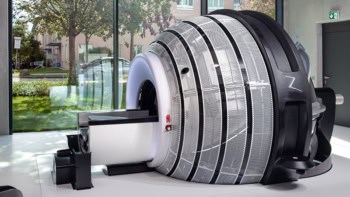Physicists are used to detecting inanimate objects like photons and particles but two teams of researchers in the US have now turned their attention to very different targets -- viruses. Harold Craighead and colleagues at Cornell University used a nanoelectromechanical device to detect an insect baculovirus, while Charles Lieber and co-workers at Harvard University employed a nanowire field-effect transistor to detect single influenza viruses. The new methods could be scaled up for applications in medicine or the detection of biological weapons.

Earlier this year, the Cornell team designed a nanoelectromechanical device that is capable of weighing objects with a mass of just 10-18 grams. The device consists of an oscillating cantilever made from a small wafer of silicon just 4 microns long and 500 nanometres wide (figure 1). When a small particle is placed on the wafer, it alters the frequency at which the wafer vibrates. This change can be measured by observing how laser light is reflected off the wafer, which then allows the mass of the particle to be calculated.
By chemically coating the cantilever with a layer of antibodies that are sensitive to a specific virus, the Cornell team has now used the same device to detect viruses (Appl. Phys. Lett. 85 2604). To do this, the cantilevers are immersed in a liquid containing the virus particles, which then stick to the device. The device is then removed from the liquid and the frequency is measured again. “The sensitivity is high,” says Craighead, “and just a few virus particles can be identified and detected rapidly.”
Meanwhile, Lieber’s team converted an array of nanowire-based field effect transistors (FETs) into a virus detector by coating the surfaces of the transistors with antibody receptors (Proc. Nat. Acad. Sci. 101 14017). Viruses were then introduced into arrays using microfluidic channels. Since viruses are charged particles, they change the current flowing through the transistor of the FET because they change the concentration of charge carriers when they bind to the nanowires (figure 2).
“The intrinsic amplification of the nano-transistor, and the fact that binding at the surface affects the ‘bulk’ carrier concentration, leads to extremely high single-molecule sensitivity,” says Lieber. Moreover, modifying the different nanowires within the array with receptors that are specific for different viruses allows multiple virus strains to be detected at the same time.
The Harvard researchers are developing arrays that can sense up to 100 different viruses simultaneously, and they hope to further increase the sensitivity of their technique so that it can detect single nucleic acids or proteins. The Cornell team also plans to create similar arrays.




